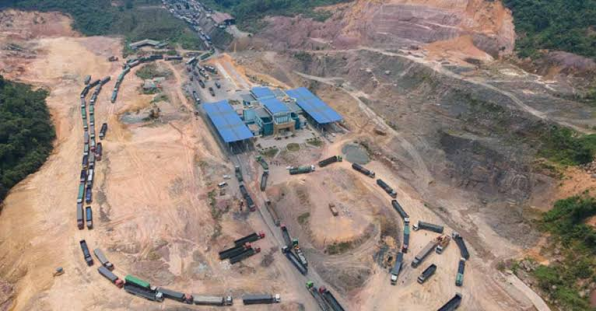
Vietnam to Build 6-Kilometer Conveyor Belt for Efficient Coal Transport from Laos
Fiona Nanna, ForeMedia News
4 minutes read. Updated 5:00PM GMT Thurs, 4 July, 2024
In a bid to streamline coal transportation and bolster energy security, Vietnam has announced the construction of a 6-kilometer-long conveyor belt to transport coal from neighboring Laos. The ambitious project, with an estimated budget of VND 1.5 trillion (approximately USD 58.3 million), is set to transport 30 million metric tons of coal annually.
The conveyor belt will stretch from the Laos-Vietnam border to a warehouse located in A Ngo Commune, Dakrong district, Quang Tri Province. Spanning 23.8 hectares, this infrastructure aims to facilitate smoother and more efficient coal transport between the two countries. The project has received approval from the Quang Tri Province authorities, highlighting its significance in improving local logistics and addressing the pressing issues of narrow and degraded roads.
This development is not merely about improving transport logistics but also about ensuring Vietnam’s energy security until 2030. The conveyor belt will help meet the domestic coal demand while alleviating the pressure on customs operations at the La Lay International Border Gate and the local highway. Over the past two years, Laos has significantly ramped up its coal exports to Vietnam, primarily through Quang Tri Province’s border with Salavanh Province. Currently, La Lay International Border Gate manages nearly 4,000 metric tons of coal daily, with peak periods handling up to 12,000 metric tons.
In 2023, Quang Tri Province imported 2.2 million metric tons of coal from Laos, leading to severe congestion at the border gate and extensive damage to local roads and highways. To mitigate these challenges, the project investor has proposed the installation of two additional conveyor belts. One belt would connect the existing conveyor to My Thuy Seaport, while the other would link the Vietnam-Laos border to a coal mine in Laos’ Sekong Province. This ambitious initiative aims to establish a comprehensive 160-kilometer conveyor system for coal transport from Laos to Vietnam.
This project is a significant step for Vietnam as it continues to strengthen its energy infrastructure and reduce dependency on traditional road transport. By adopting such innovative solutions, Vietnam is not only addressing local logistical challenges but also setting a precedent for other nations grappling with similar issues.
For more insights on Vietnam’s infrastructure projects, check out our latest articles.
Backlinks:
- Learn more about Vietnam’s energy initiatives here.
- Discover the latest developments in Laos’ coal industry here.
Stay updated with the latest news on infrastructure and energy projects in Southeast Asia by following our news section.

